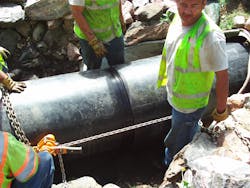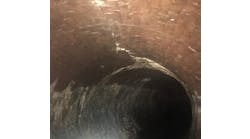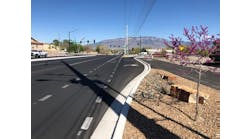The Southeast Metro Stormwater Authority (SEMSWA), located in the south metro Denver, Colo., area, is responsible for several culverts located throughout many residential neighborhoods. After evaluating the culverts, SEMSWA determined that multiple culverts were damaged and needed to be replaced.
Besides being located in a residential neighborhood, the area containing the culverts also was considered a protected wetland and residential park. Therefore, this area could not be disrupted and care had to be taken not to affect the water quality.
Since digging and replacing the damaged corrugated metal pipe (CMP) culverts would severely inconvenience the local residents, potentially harm the wetland area, and cripple the already small SEMSWA budget, a solution was needed to quickly and cost-efficiently replace the pipe.
SEMSWA decided to use Snap-Tite pipe and purchased 80 linear feet of 30-in. Snap-Tite pipe for three scheduled projects to reline the old culverts.
The first reline project served as a demonstration where other government agencies were invited to watch. Attendees included representatives from the Colorado DOT as well as some local contractors.
The SEMSWA crews were able to quickly move the 30-in. pipe in place for lining the CMPs using a mini excavator. For each of the culverts, one section of pipe was slid inside the old culvert. Then the next section was snapped on using a come-along and chains. This process was repeated for each culvert until the liner was in place from end to end. Finally, grout was used to fill in any annular space between the old wood culverts and the new pipe liner.
The SEMSWA maintenance supervisor, Bob Winzent, commented that the installation made it easy for them to fix their culverts on short notice.
The culvert lining system was a no-dig solution that rehabilitated the culvert without shutting down the road and disturbing either the residential traffic or the protected wetland area.



